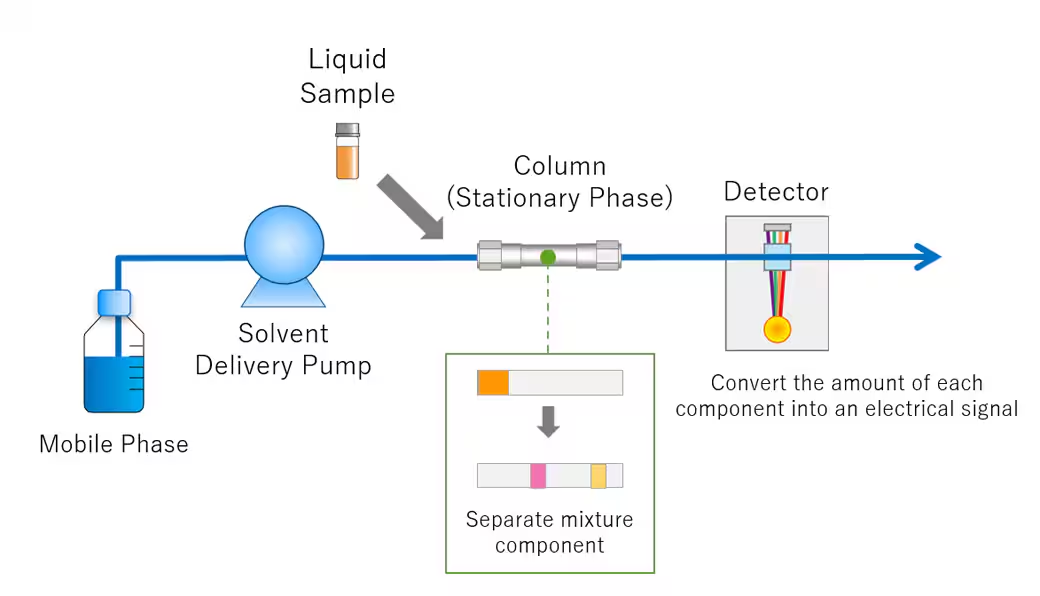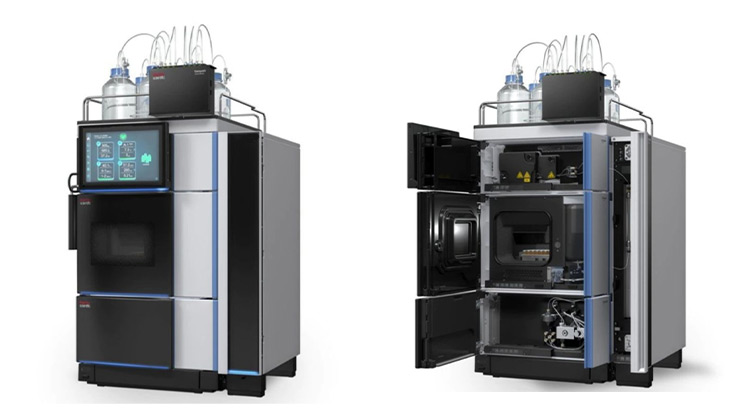Introduction:
High-performance liquid chromatography (HPLC) is a widely used analytical technique in biological research. It excels at separating complex mixtures of biomolecules. This makes HPLC valuable for various applications, including:
- Protein purification: Isolating specific proteins from cell extracts or fluids for further analysis or functional studies.
- Metabolite profiling: Identifying and measuring small molecules within biological samples to investigate metabolic pathways and disease states.
- Nucleic acid analysis: Separating and characterizing DNA and RNA fragments for applications like genotyping, mutation detection, and gene expression analysis.
- Drug discovery and development: Analyzing drug candidates, their breakdown products (metabolites), and impurities to aid in developing new therapeutic agents.
The How of HPLC:
HPLC separates mixtures based on the interaction between two components:
- Mobile phase: A liquid that carries the sample through a column.
- Stationary phase: A solid packing material inside the column with specific properties that attract or repel analytes.

The choice of stationary phase and mobile phase composition determines how separation occurs. Common separation methods include:
- Reversed-phase chromatography (RPC): Most common method, where the stationary phase is water-repelling (hydrophobic) and the mobile phase polarity is adjusted to separate analytes based on their water-attracting (hydrophilic) properties.
- Normal-phase chromatography (NPC): Uses a water-attracting (polar) stationary phase and a non-polar mobile phase, separating analytes based on their polarity.
- Ion-exchange chromatography: Separates electrically charged molecules based on their interactions with charged groups on the stationary phase.
Benefits of HPLC:
- High Resolution: Separates closely related molecules better than older chromatography techniques.
- Versatility: A wide range of stationary phases and mobile phase compositions allows customization for specific analytes and samples.
- High Sensitivity: Modern HPLC systems, often coupled with mass spectrometry (MS), can detect very small amounts of analytes.
- Automation: HPLC systems can be automated for analyzing many samples quickly.

The Future of HPLC:
- Integration with other techniques: Combining HPLC with MS allows for simultaneous separation, identification, and measurement of analytes.
- Faster and Smaller HPLC Systems: Developing high-throughput and miniaturized HPLC platforms will streamline workflows and reduce sample needs.
- Improved Stationary Phases: New stationary phases with tailored properties are being developed for better separation efficiency and selectivity.
Conclusion:
HPLC remains an essential tool in biological research due to its versatility, high resolution, and ability to separate complex mixtures of biomolecules. As technology advances and integrates with other techniques, HPLC will undoubtedly continue to be a cornerstone in biological research, leading to a deeper understanding of biological processes and new discoveries.